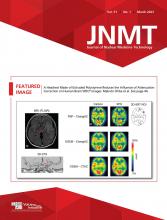TO THE EDITOR: PET imaging and radiation treatments (radiotherapy and radionuclide treatments) are commonly used for cancer. PET imaging is used to plan radiation treatments and assess the response to those treatments. In this letter, I want to emphasize the possibility that autoimmune inflammatory PET uptake after radiation treatments may mimic tumor or metastasis. Radiation kills cancer cells mainly via DNA damage, but radiation treatment–induced activation of the immune system (activation of T cells and other immune cells) via release of tumor antigens, proinflammatory cytokines, chemokines, and other signals may also contribute to death of cancer cells (1). Radiobiologic effects of radiotherapy can be seen in nearby nonirradiated cells (bystander effect), in nearby cancer cells receiving a lower dose (cohort effect), and in distant nonirradiated cancer cells (abscopal effect) because of activation of the immune system (2). In the abscopal effect, metastatic foci away from the radiotherapy field can shrink secondary to an activated immune system, and this effect may be visible on PET images. In systemic radionuclide treatments, activation of the immune system may contribute to cancer cell death and enhance the effect of immunotherapies (3,4). Activation of the immune system by radiation treatments may cause autoimmune inflammation in various local or remote tissues such as the lungs (immune-mediated pneumonitis), and this may be visible on PET images, particularly on 18F-FDG PET (similar to side effects of immune checkpoint inhibitor treatments seen on 18F-FDG PET images), and require careful evaluation of the images so as not to mistake autoimmune inflammation for tumor (5,6).
Footnotes
Published online Nov. 9, 2022.







